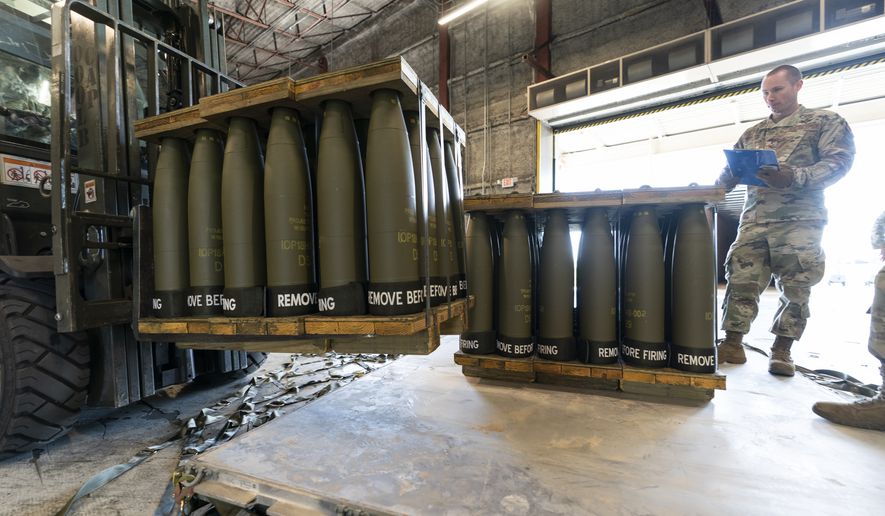Despite expediting some $30 billion in military aid to Ukraine since Russia invaded a year ago, Pentagon officials are pushing the nation’s defense industry to pick up the pace.
Secretary of the Army Christine Wormuth, in a briefing with reporters Thursday, recalled a recent visit to an Army arsenal in Scranton, Pennsylvania, where workers turn out the casings for 155mm artillery ammunition.
“We’re actually adding production capacity there,” she said during a talk to the Washington, D.C.-based Defense Writers Group. “We’ve been working very, very closely with the defense industry folks to try to help them expand their production. That’s really the piece we’re focused on in the Army.”
Secretary Wormuth said the Scranton plant output has steadily increased over the past year. It is turning out 20,000 155mm shells a month, up from about 14,000 at the start of the war.
“By 2025, we’re going to be doing 75,000 [artillery shells] a month. That’s a 500% increase basically from where we started,” she said. “We’re trying to use our own investments in the organic industrial base or partner with industry, with the big companies, to increase production.”
The Defense Department is taking the same approach for other U.S. weapons now in the pipeline to Ukraine, including the Guided Multiple Launch Rocket System (GMLRS) and the FGM-148 Javelin anti-tank weapon, Ms. Wormuth said.
“We’re looking into that across the board,” she said.
Congress has given the Defense Department authority to sign multi-year procurement contracts with defense contractors, something the industry has long requested.
“One of the things I’ve heard from CEOS is, ‘If you’re going to ramp up production, we need to have a constant demand signal,’” Ms. Wormuth said. “That [authority] is really going to be helpful.”
President Biden agreed to supply Ukraine with 31 M1 Abrams tanks after Germany indicated it wouldn’t provide tanks to the battlefield unless Washington also joined the deal. The Army is now putting together options for Secretary of Defense Lloyd Austin and is also talking to Poland and other allies with M-1 Abrams tanks about possibly transferring them to Ukraine.
“We’re looking at all of those options. They all have pros and cons,” Ms. Wormuth said. “Some could get tanks to the Ukrainians more quickly, but it might disrupt relations with important allies and partners.”
However, there is no option where the U.S. will be able to provide tanks to Ukraine within a few weeks or months, she said.
“We’re looking at what is the fastest way we can get the tanks to the Ukrainians,” Ms. Wormuth said, adding it was likely more than a year before the first U.S. tanks could be delivered.
• Mike Glenn can be reached at mglenn@washingtontimes.com.




Please read our comment policy before commenting.